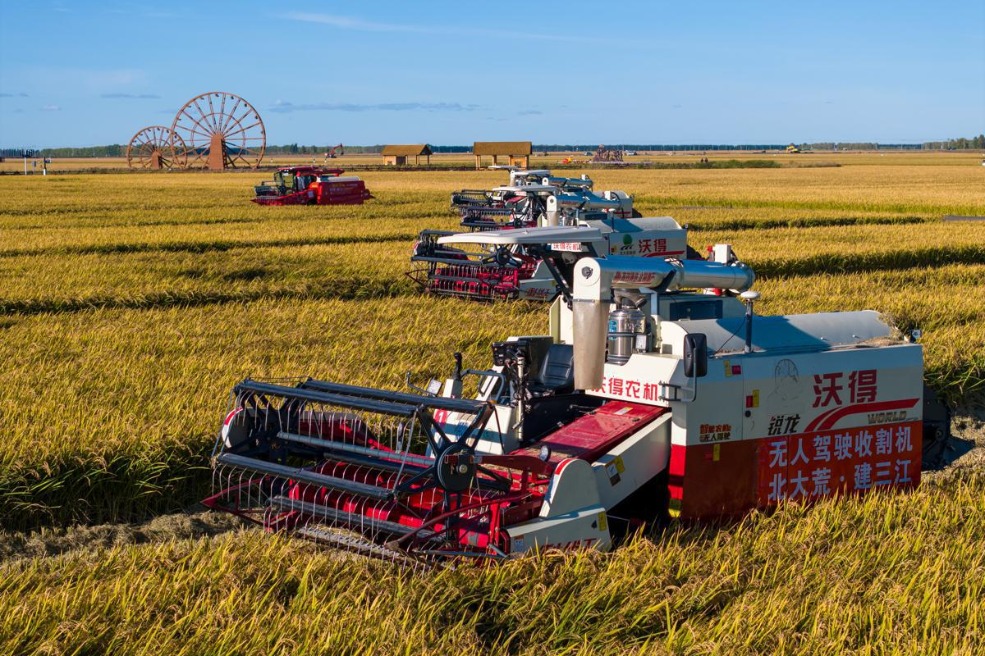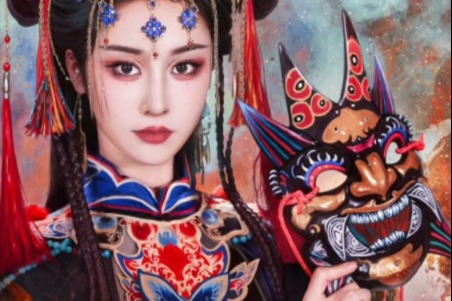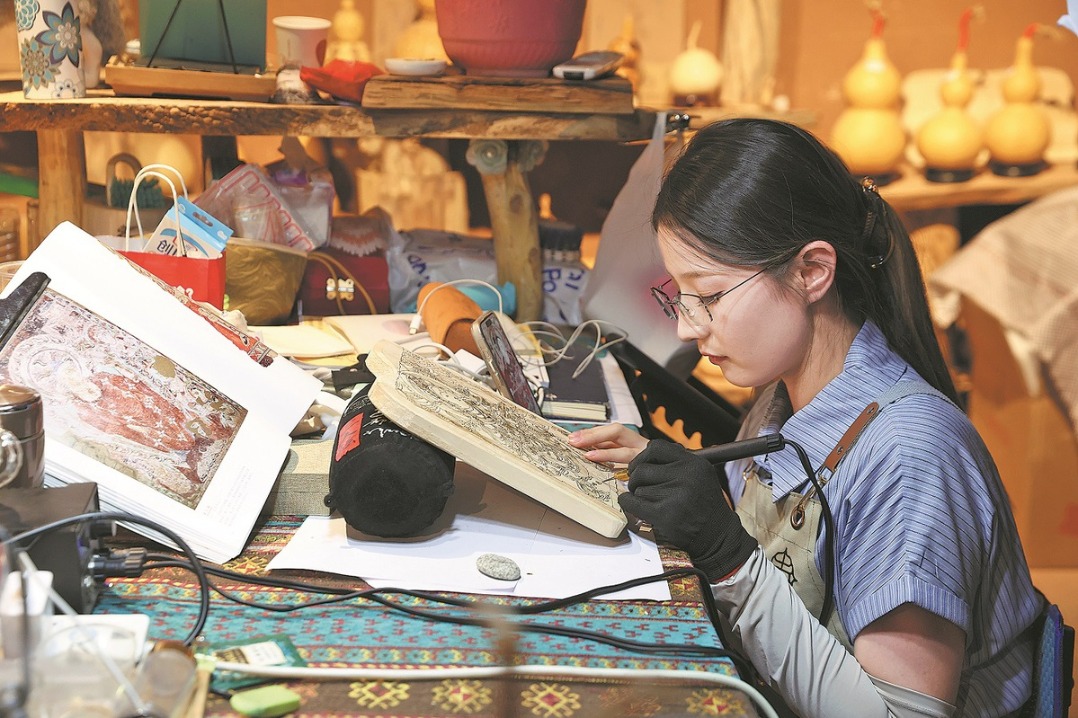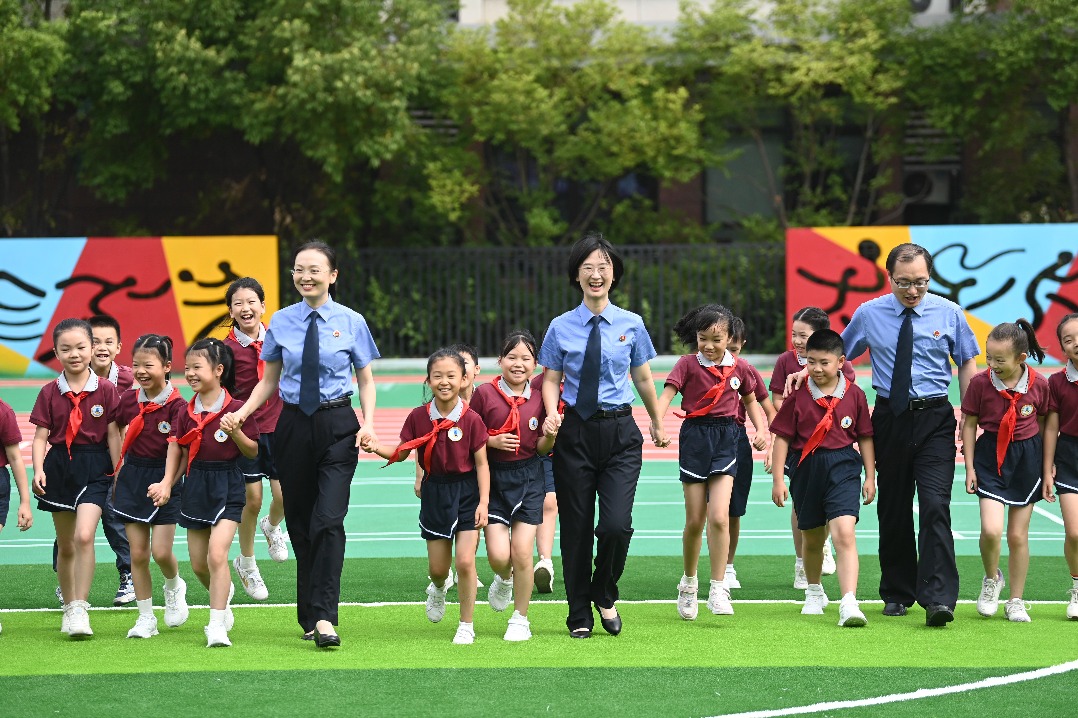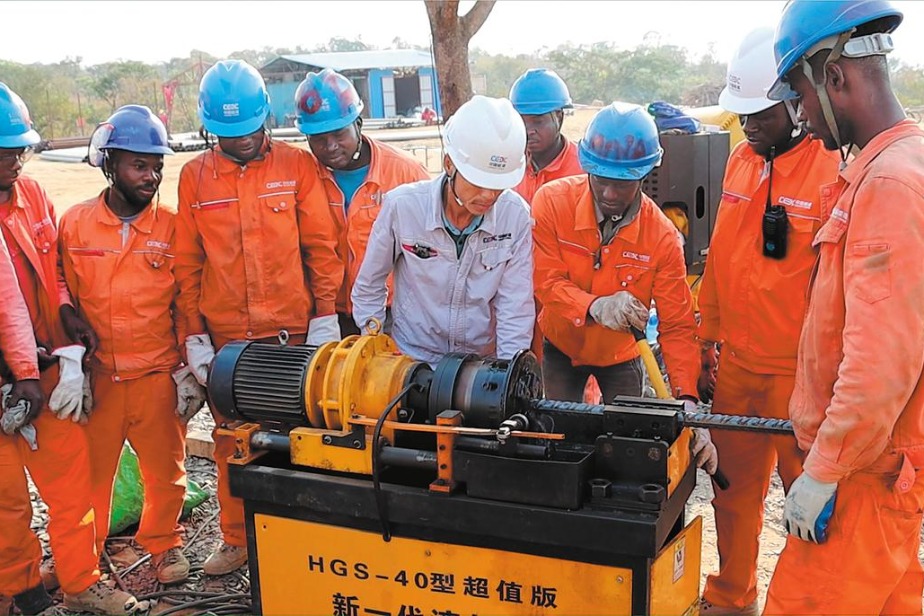Old treasures write new chapters in history
Liaoning farmer's accidental find connects family to Hongshan culture

Editor's note: As China's civilization exploration project continues to deepen, stories of ordinary people discovering precious artifacts remind us that the roots of our 5,000-year civilization continue to flow through daily life. This true story from Liaoning tells us that cultural treasures may be right beside us, waiting to awaken our heartfelt dialogue with ancient civilization.

In the 1970s, farmer Ma Longtu from Jianping, Liaoning province, made what seemed like an ordinary decision. While working in the fields, he unearthed a strange, dark brown object. Since it had no bottom and couldn't hold water, he had a bright idea and fashioned a base with cardboard to turn it into a penholder. For nearly a decade, this "improvised" desktop accessory quietly held writing brushes, pencils and rulers.
Who could have imagined that this humble penholder was actually a 5,000-year-old jade ring from the Hongshan culture — one of China's most important Neolithic civilizations.
The turning point came in 1981. When Liaoning provincial cultural relics survey expert Guo Dashun entered Ma Longtu's home, his attention was immediately drawn to the "dark brown tube" on the desk filled with brushes, ink, paper and inkstones. Without hesitation, he pulled out a magnifying glass for careful examination and asked with excitement: "Where did you get this?"
"Found it in the field," Ma replied.
Guo slapped his thigh with excitement: "This is a 5,000-year-old treasure, a jade ring from Hongshan culture!"
Upon hearing this, Ma immediately stood up and grabbed the expert's arm: "Please take it away! This belongs to the country and should return to where it truly belongs!"
This discovery triggered major archaeological excavations at the Niuheliang site. Ma also became involved in the "root-seeking" work of the 5,000-year-old civilization, becoming a guardian of Hongshan culture.
The story didn't end there. In 1983, when the Niuheliang archaeological team was recruiting members, Ma's son Ma Ruicai was the first to sign up. This fortunate young man witnessed the unearthing of a goddess statue on Nov 2 that year.
The transportation process was fraught with difficulties — the road to Majiagou was full of potholes, making it impossible for vehicle wheels to pass. A group of people stood around the red silk-wrapped box, wondering what to do. They finally chose a female team member, Wei Fan. She held the box tight like her own child and walked for over an hour to safely transport the goddess statue to Majiagou.
Today, Ma Ruicai works as a security guard at the Niuheliang Goddess Temple. In his spare time, he always takes his grandchildren to the site museum to tell them the story of how their great-grandfather used a jade ring as a penholder.
The children exclaim: "Grandpa, it turns out our ancestors' treasures were hidden in our everyday lives all along!"
As experts have noted, although the Hongshan culture dates back very far, people don't feel unfamiliar with it when they encounter it, because it contains profound cultural inheritance. From a cardboard-bottomed penholder to a national treasure, from field farmer to cultural relic guardian, the 5,000-year-old Hongshan civilization comes alive in ordinary times and continues to write new chapters through generations of inheritance.
Contact the writers at wuyong@chinadaily.com.cn


















